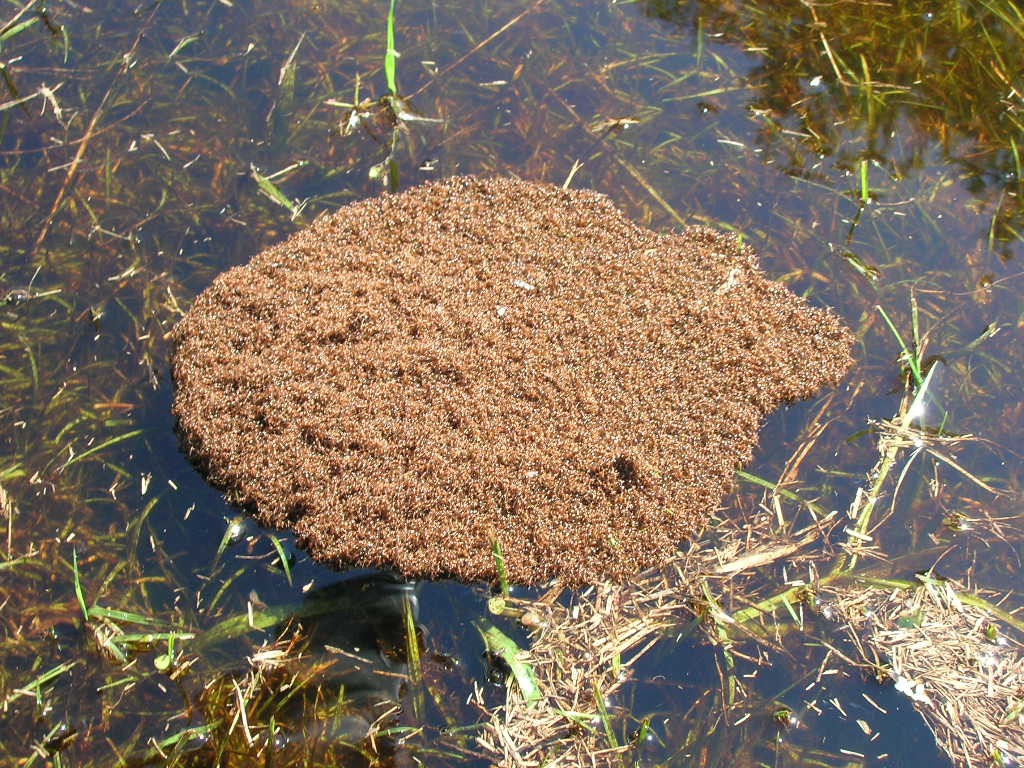Fire Ants Build Towers To Survive Floods, New Study Says
by kevin_jackson, 8 years ago |
4 min read
Ant colonies appear to be able to think with a single brain.
Ants are crafty little guys. Every summer they invade my kitchen, searching for tiny bits of food I missed while cleaning my counters and floors. I’ve tried putting out ant traps, but they’re too smart for that trick — they seem to immediately sense danger and steer clear of the bait. But a recent study found that ants have some incredibly clever survival techniques that make me feel a little less badly about not being to trap them in my kitchen. Researchers at the Georgia Institute of Technology studied fire ants, or Solenopsis invicta, as scientists call them when they want to sound all fancy. For their study, the researchers observed how fire ants create temporary shelters during floods. Remarkably, there’s no grand plan behind this tower-building. As the science news site Phys.org puts it, “Each ant wanders around aimlessly, adhering to a certain set of rules until it unknowingly participates in the construction of a tower.” It’s almost like thousands of ants can think with a single brain. Anyways, the reason the structure comes out looking like Paris’ Iron Lady has to do with how it’s built. Though ants can lift thousands of times their own weight, they’re only comfortable supporting the weight of three ants when escaping a flood. So, rather than building straight up, the insects must build out a base before stretching to the sky.I didn't think I'd make it thru this video cause shit like this makes me itch but my inner nerd wouldn't let me look away https://t.co/Zzt0QhOedI — @LIVxWESTWhen one ant decides the struggle is too great, he releases his grip and falls to the ground. The tower is the result of the weakest parts falling away and the strongest remaining. This Eiffel Tower shape isn’t the only structure ants form to save their colonies. National Geographic points out that fire ants are able to link their bodies together to form a working raft like this:


✕
Do not show me this again
